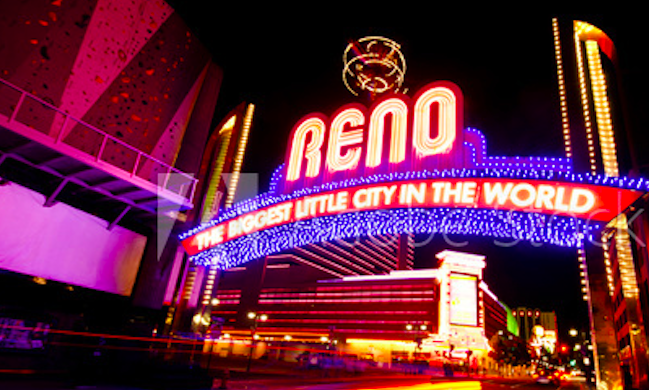In 1929, the Reno City Council decided that, rather than dismantling the steel sign arching over the road into town, they would replace the wording that promoted the 1927 Nevada Transcontinental Highways Exposition with a slogan to promote the town. A contest was launched, and out of 200 entries the $100 prize went to "The Biggest Little City in the World."
The updated sign did its job. During the past 90 years Reno has become a much bigger little city and today its 1.5% annual population growth, twice the national average, is driving real estate values.
With nearby Sparks, Reno is an anchor city of the Reno-Sparks, NV Metropolitan Statistical Area (MSA). The latest VeroFORECAST from Veros Real Estate Solutions predicts that real estate in the MSA will appreciate at a rate of 9.5% over the next year, ranking it sixth out of the 354 MSAs included in the report.
The neighboring Carson City, NV MSA is also projected to see property values appreciate at 9.5% through May 31, 2019, which ranks it fifth on the list. Their mid-Top Ten slots show an acceleration in rising values, as neither was in the Top Ten for the first quarter 2018 report, released in late March.
In the 2010 U.S. Census, the Reno-Sparks, NV MSA had over 425,000 residents divided between its two counties: 90% in Washoe and the balance in Storey. Carson City MSA, made up of one county – and the state capital – both named Carson City – had a 2010 population of 55,274. By comparison, the last census put the population of the state's largest MSA, Las Vegas-Paradise, at 2 million.
This puts these two Nevada MSAs in high-flying company. They follow four markets boosted by technology employment: three Washington State MSAs – Seattle at 11.1%, and Olympia and Bremerton-Silverdale, both at 9.8% – and San Jose-Sunnyvale-Santa Clara at 9.5%, profiled in my last column.
It is solid evidence that Nevada continues to rebound strongly from the financial crisis a decade ago. Nevada's "Biggest Little City" is now the state's third largest, behind Las Vegas and Henderson. Sparks and Carson City are fifth and sixth after North Las Vegas.
A TECH BOOST FROM TRIC
In the past five years, the Reno-Sparks MSA has benefited from a successful campaign to attract tech to the Tahoe Reno Industrial Center (TRIC), which claims to be the largest industrial park in the world. There's more than 15,000 acres of "pre-zoned, fully entitled, and in active development" land is the site of the Tesla Gigafactory 1, and TRIC sees more to come from Blockchains, Google, Jet.com, and Switch.
Mike Kazmierski, president and CEO of the Economic Development Authority of Western Nevada, said that, while job growth and favorable business and tax conditions had made the entire state attractive to companies and residents, in Northern Nevada, "the arrival of big-name companies such as Apple, Tesla and Google is helping dispel old stereotypes of Reno as a poor man’s Las Vegas. Costs that remain lower compared to next-door neighbor California remain a factor as well."
The impact can be seen in Reno Metro's year-over-year job growth, which, according to the June 2018 Nevada Economy in Brief, a monthly review of workforce and economic information, grew 3.7% from June 2017 to June 2018. That compares to Carson City's 3.3% and 2.7% for both Las Vegas MSA and the state as a whole. The nation's rate was 1.6%. The Reno-Sparks MSA's unemployment rate of 3.5% is not only a half-point lower than the national average, but more than a full percentage point lower than the state and the Las Vegas MSA.
What's more promising, according to a study by the University of Nevada, Reno's Center for Regional Studies, is that a healthy percentage of those arrivals are younger people. Nearly 45% of those moving into Washoe County during the first half of this decade were 18 to 34, which is nearly twice that age group's percentage of the U.S. population.
The 354 MSAs used to generate this data, which projected a national average of 4.4% appreciation, include 1,005 counties and 13,877 zip codes, and account for the residences of 82% of the U.S. population. That is a dozen more MSAs than were used for the first quarter report.







